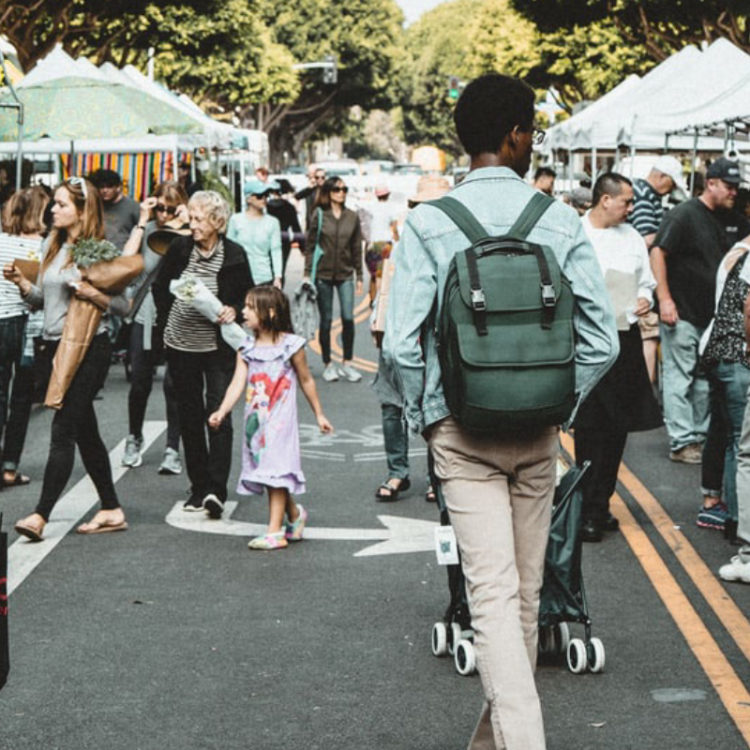What are the Different Retail Store Types?
Most consumers don’t pay attention to the “type” of retail store they shop at, as long as they can get what they came for. But the different retail store categories matter to marketers who are tasked with creating customer experiences and meeting shopper expectations.
Knowing the different retail categories and where your retail store fits in can help you develop a solid merchandising plan to maximize sales and return visits.
8 Types of Retail Stores
The type of retail store influences everything from store layout to the type of customer you attract. Let’s look at the different retail categories in more detail.
1. Grocery/Supermarket
Grocery stores and supermarkets provide a general range of food products. Selections typically include fresh and packaged foods, beer and wine, pet food, and basic household products like paper goods and cleaners. Safeway, Kroger, and Whole Foods are examples of the grocery or supermarket retail category.
The average grocery store size is currently 38,000 square feet, with small formats ranging in size between 12,000 square feet and 25,000 square feet, and even smaller micro-stores in urban markets. In recent years, we’ve seen a number of small-format grocery stores emerge, such as Aldi, DG Market, and smaller versions of larger chain stores.
When merchandising a grocery store, retailers typically follow the loop layout — one defined main aisle circles the entire store, with smaller lanes in the center.
2. Convenience Store
Small in size and offering “quick trip” experiences, convenience stores are hallmarked with longer open hours and convenient locations. They typically provide a selection of basic foods and drinks, alcohol, and everyday essentials. Many also have a fuel station as part of their operations.
7-Eleven, Speedway, and Sheetz are all examples of the convenience store model. The average convenience store size is around 2400 square feet and follows a diagonal or straight store layout.
3. Big Box/Superstore
Walmart, Target, Lowe’s, and Home Depot dominate the big box retail scene. These retailers (and others in this category) occupy an enormous amount of physical space and supply a range of goods in multiple product categories. For instance, you can pick up plants, hand soap, mailing supplies, and a new drill all in the same store.
Big box stores typically occupy more than 50,000 square feet, with typical ranges between 90,000-200,000 square feet. They often have their own parking lots (though not always in metro areas).
The grid or loop layouts are most common in a superstore, with a grid being defined as clusters of aisles that are densely packed for customers to browse.
4. Specialty Store
Specialty stores are true to their name by carrying a deep assortment of brands, styles, or models within a relatively narrow category. Examples include craft stores, furniture stores, garden centers, sporting goods stores, and bookstores.
The average size of a specialty store will vary greatly depending on the type of store it is. You might have a small boutique that’s just 2,000 square feet or a large worldwide brand that requires 60,000 square feet.
Specialty stores can use a wide variety of layout types based on the scale of their operations. For smaller stores, a free flow layout inspires curiosity, while a grid, loop, or diagonal layout is optimal for medium and larger stores.
5. Department Store
Often found in malls, a department store is a retailer offering a wide range of consumer goods in different areas (or departments) of a store. Department stores have a reputation as being a little pricier than big box stores and selling higher-end brands. Macy’s, Kohl’s, and Neiman Marcus fall into the department store category.
The average department store is around 250,000 square feet and often uses the loop layout to connect customers to every department.
6. Discount Store
Known for having lower-than-average prices, a discount store’s secrete lies in merchandising. Retailers aim to give the feel of offering all their products for less than the average retail price. Think Dollar Tree, Big Lots, or Five Below as examples of discount stores.
These stores average 10,000 square feet in size and leverage the loop layout to encourage customers to explore the whole store.
7. Off-Price Retailer
The off-price retail model is an offshoot of the discount retail model. Retailers typically highlight the “normal” retail price alongside their lower price so shoppers can see what kind of deal they’re getting. Off-price retailers are independent of manufacturers and buy large volumes of branded goods to sell at a reduced cost. Examples include TJ Maxx, Burlington Coat Factory, and Nordstrom Rack.
Smaller format stores like TJ Maxx are approximately 30,000 square feet, while stores like Nordstrom Rack can be upwards of 120,000 square feet. Small footprint stores in this category are also becoming popular, averaging just 2,000 square feet. Most follow either a grid or loop layout, or a combination of the two.
8. Warehouse
Warehouse retailers, such as Costco or Sam’s Club, are food and product retailers that offer large quantities of items at attractive discounts. These stores create a no-frills experience and instead focus on moving products in higher volumes.
The average warehouse ranges from 84,000 to 146,000 square feet and generally follows a loop layout.
Final Thoughts
Which of the above types of retail stores does your store fall under? Knowing the unique characteristics of your store and its typical layout can help you make sound decisions on how to merchandise your products. Maximize every customer’s visit by putting your products where they’re most likely to be noticed.
For specific insights on merchandising based on your store type, check out The Ultimate Guide to Retail Store Layout & Design.


